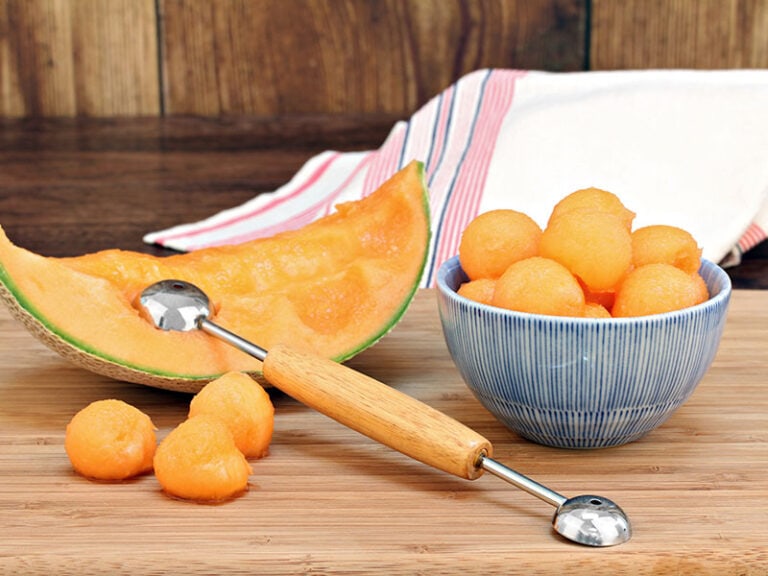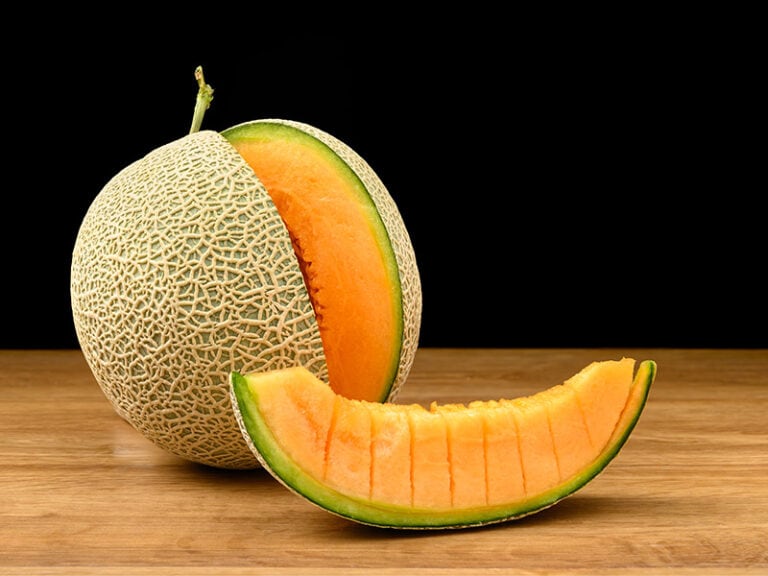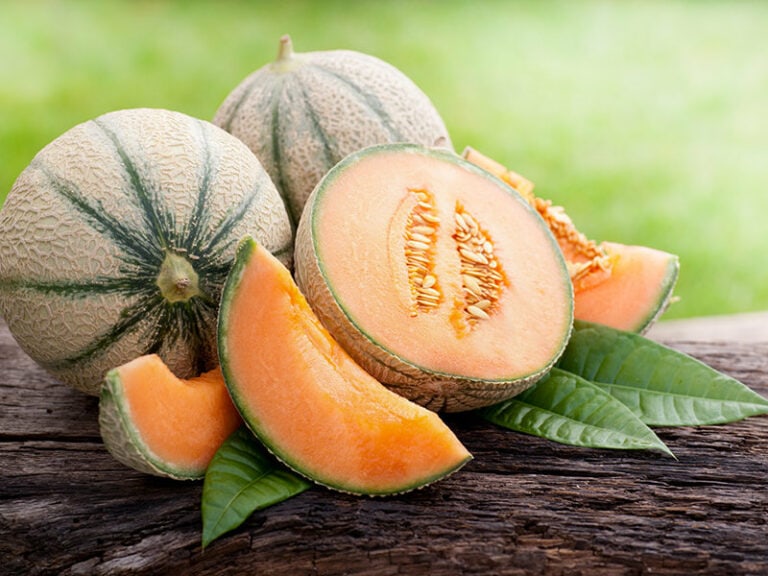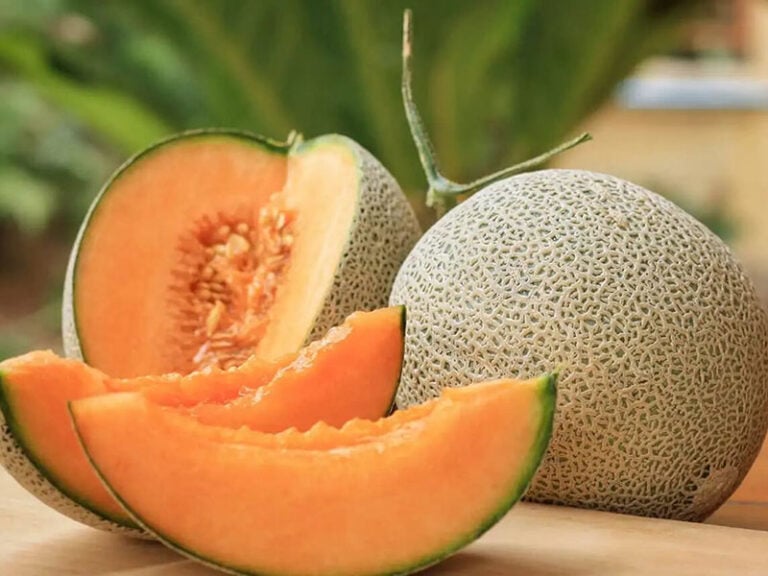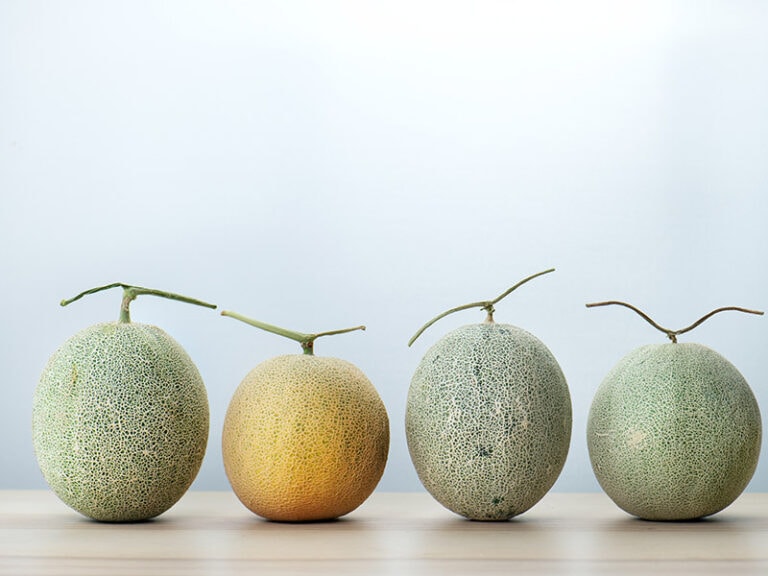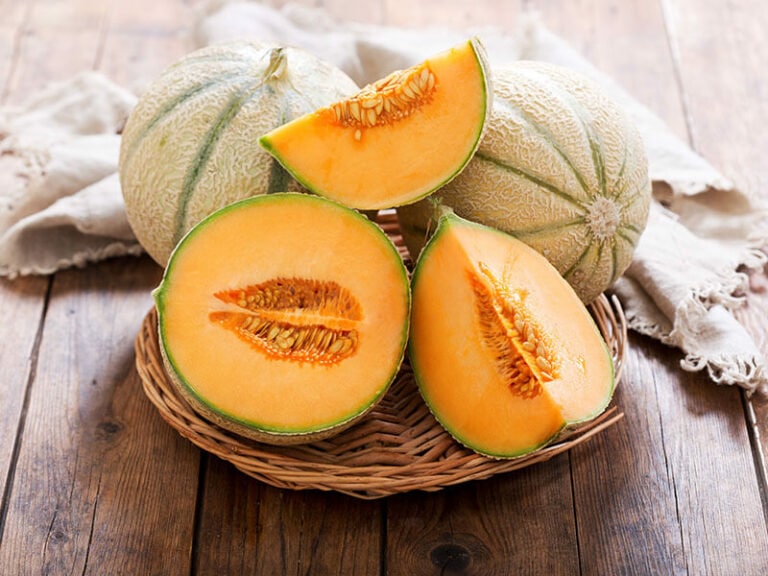What color is cantaloupe? Due to the variety and the ripeness, cantaloupe may have different hues, including its rind and pulp. Therefore, many people are struggling to choose a good cantaloupe since they can’t tell which color is right.
Suppose you are one of those, don’t let that question bother you! With this in-depth post, you can easily classify the shades of cantaloupe as well as how to pick a good one. The answers are all here, waiting for you to discover!

There Are More Than Two Species Of Cantaloupe
Before getting into the color of cantaloupes, let’s make clear that there are not only one or two kinds of cantaloupe. In addition, cantaloupe is technically a species of the muskmelon family, so you can call cantaloupe by muskmelon, but not vice versa.
This means that there are clear distinctions between cantaloupes and muskmelons. You should keep this in mind the next time you want to buy either cantaloupe or a muskmelon, as I’m certain you don’t want to mistake one another accidentally.
In the United States, the cantaloupe that you usually see in the grocery store or market is scientifically called Cucumis Melo Reticulatus – which is also known as North American cantaloupe or rockmelon.
The “authentic” cantaloupe is now mostly planted and commercially produced in Europe – Cucumis Melo Cantalupensis – it offers a more distinct flavor and is slightly sweeter than its U.S counterpart.
Moreover, the cantaloupe originated from Asia, more precisely – Persian. So don’t be surprised if cantaloupes are sometimes seen as tasty desserts in Persian cuisine. Cantaloupes here has different rind color from the above species; its flesh is likely to be crunchy instead of tender.
The most expensive cantaloupe nowadays – or perhaps among the most pricey fruits – is the Japanese version, also known as king melon or “Yubari King”. It appears to be smaller compared to cantaloupes’ average sizes, but it’s the price tag that will identify it from the rest.
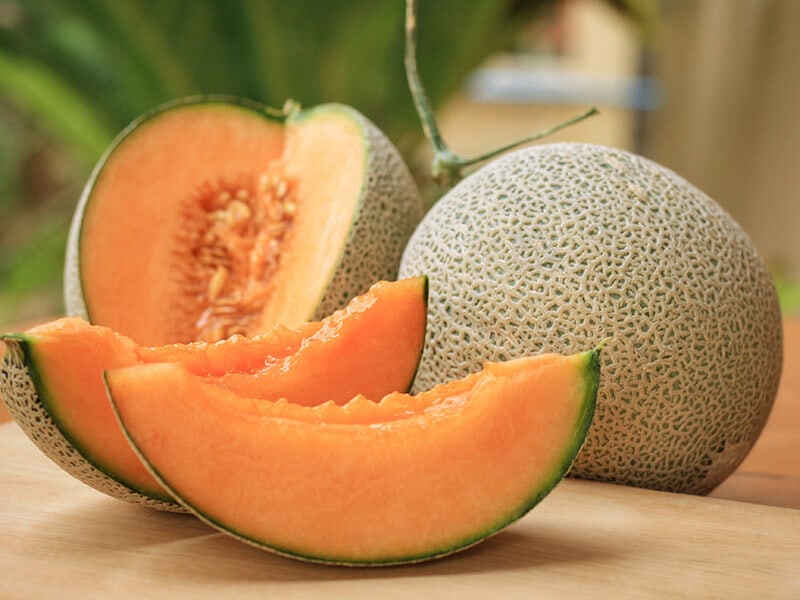
Another kind is Galia cantaloupe or honeymoon melon. Its rind is lookalike to regular cantaloupe, but the flesh is pale green. Therefore, many people called it a cantaloupe outside but a honeydew inside.
However, since the North American cantaloupe and the European version are the most common types of this melon, I will refer to these for the remainder of this article. Now, let’s skip the chatting and get into the answer you’re searching for!
Check out an extraordinary cantaloupe with green flesh.
The Skin Color Of Cantaloupe
As with most types of melon, cantaloupe includes beige, green, and yellow on its rind color. Due to the ripeness as well as the variety of the cantaloupe, the hues are different.
The Variety Of Color
The North American cantaloupe and its European counterpart are different in the color of the rind and the pattern. Like most other muskmelons, cantaloupe is covered in a beige web. Its skin is somewhat stiff and green in color.
On the other hand, the European cantaloupe is more distant from the muskmelon family. It’s more likely a pumpkin in round-shaped with green stripes along the rind. These cantaloupes have a sparser netted web; some even don’t have the web at all.
The Color Depends On Ripeness
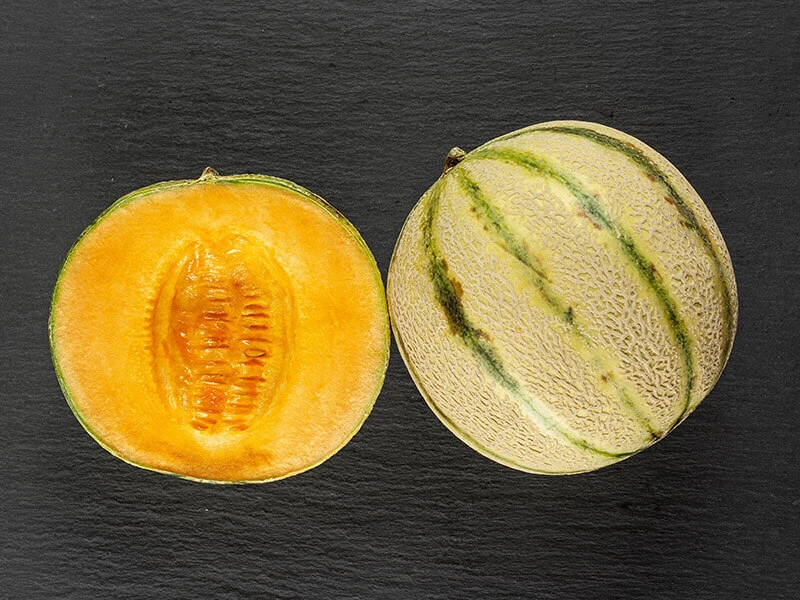
When they’re raw, both kinds of cantaloupe have a green color. Meanwhile, yellow is a sign indicating that cantaloupes are ripe. However, you may notice that some melons’ rind remains green after ripen, or even after being spoiled.
This is more often related to the U.S cantaloupe since some new species have been created to prevent discoloration. Therefore, with these foods with names starting with “C”, the only change in color that you can see is their shades; the bad ones will have a darker rind due to the lack of moisture.
The Flesh Color Of Cantaloupe
Unlike rind, the flesh of cantaloupe is similar in most species, which means, no matter the one you’re handing is from North America or Europe, its flesh should be orange.
The unripe cantaloupe flesh has a pale green or white color. These melons offer a quite bland flavor with stiff texture as well as the lack of fragrance – which is edible but tastes no more than a vegetable.
In contrast, the salmon-hued is what you’re looking for so dearly from a cantaloupe flesh. When you cut a ripe cantaloupe, it will unveil a pinkish-orange flesh, comes along with some juice leak, and a beautiful fragrant smell.
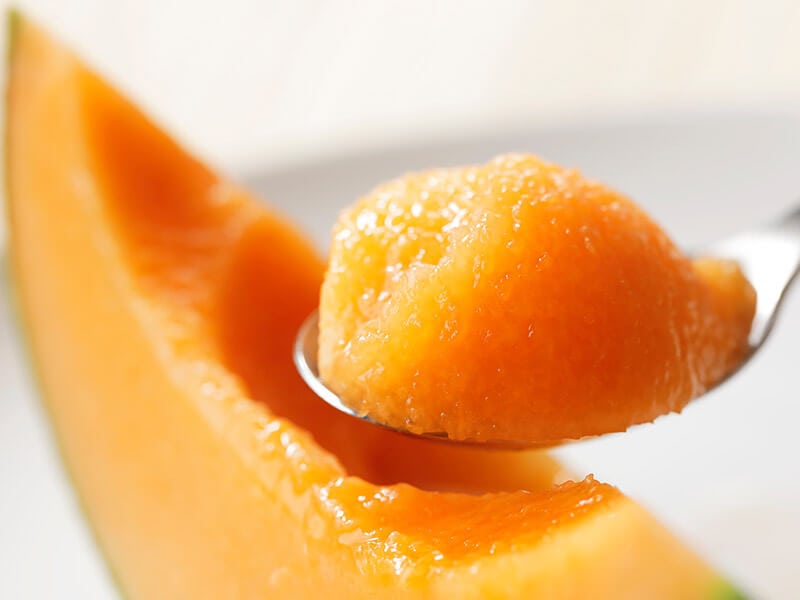
To be specific, cantaloupe flesh should look and feel like ripe peaches, but more orange and less vibrant. Due to this similarity and the sweet tastes, cantaloupes and peaches are often combined in many recommendations for making salad meals as well as whipping up smoothies.
You would also want to avoid the overripe version of these fruits since they offer an overwhelming scent and are mushy enough to be barely enjoyable. So they’re not the best choice for your list of accompanying dishes to make in the summer. Opt for a properly ripen one instead!
Check out how cantaloupe and peaches can create a beautiful and healthy smoothie.
The Instruction To Pick A Good Cantaloupe
After all, juicy and refreshing cantaloupe is what everyone wants. As mentioned above, a good cantaloupe should be picked during the season for cantaloupe, at its peak of ripeness, and have no sign of spoilage. Follow the instructions below to pick the correct cantaloupe.
Step 1: Find A Good Place
I highly recommend purchasing cantaloupe from farmers instead of markets or grocery stores. Transported cantaloupe has a high possibility of being damaged during transportation.
If you’re living in California, Arizona, Florida, or Georgia, you have a higher chance of finding a cantaloupe farm in your area. But if you don’t have enough desire to drive to a farm, you can skip this step.
Step 2: Observe The Skin
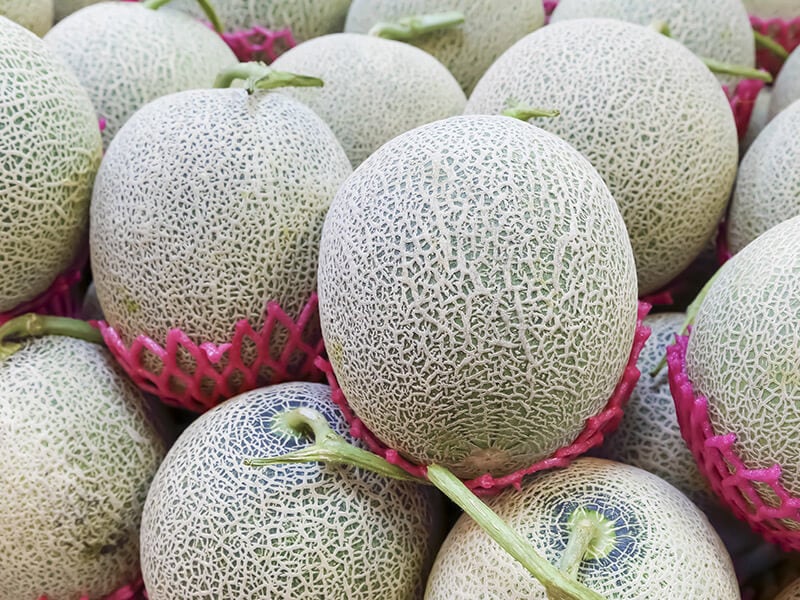
Whether the cantaloupe skin is green or yellow, it should be evenly. Different shades may be a sign of uneven ripeness or even spoilage.
The weird bruises or mushy areas are the worst things to expect when buying a cantaloupe, as they can affect the time length cantaloupes can last. Since cantaloupe is often planted on the ground, these strange spots could be a warning of dirt or bacteria contamination.
Step 3: Check The Stem
Cantaloupe is a self-picking fruit, which will separate itself from the vine once ripe. Therefore, what you should expect to see on a ripe cantaloupe is an indented scar at the stem spot, not the stem itself.
Step 4: Forecast The Mass
The older the cantaloupe is, the more watery it will be, which means it’ll become heavier once ripe. Therefore, when you lift a ripe cantaloupe, you may notice its mass is more significant than its appearance.
Step 5: Knock Or Tap On The Rind
First, the rind of cantaloupe should neither be too stiff nor too soft, and these are the signs of unripe and overripe ones. The right cantaloupe will give certain density feelings when you press on its rind.
Then, like watermelon, you can tap on the rind to feel the ripeness. A good one should have a deep sound instead of the unripe’s hollow sound.
Step 6: Press On The Stem Scar
After you’ve checked the stem of the cantaloupe, you ensure the ripeness by gently pressing on it. The rind is especially softer in this area, and it’ll expose the flesh’s smell when you give it a touch.
When unripe, the cantaloupe will express a raw vegetable pungent. And the overripe ones will have an overwhelming odor that may bother you when sniffing. On the other hand, ripe cantaloupe will release a dearly fragrant smell when you press on its stem.
Check out some useful tips you’ll need for the next time purchasing a cantaloupe.
Don’t use the techniques for cutting cantaloupes to check where they’re ripe! Serious, don’t do it! Once cut, cantaloupe will stop its ripening process and begin to soften. Therefore, if you accidentally cut your cantaloupe when it’s unripe, you’re going to discard it afterward.
However, since cantaloupe is a type of exporting fruit, it often sells raw. In this case, you can let it sit on the counter for 2 to 5 days to ripen; use the same method above to check its ripeness daily.
If you want to accelerate the ripening process, place your cantaloupe nearby a ripe banana or apple. Putting it in a roll-up paper bag will also do the job. Note that once the cantaloupe is ripe, it will become spoiled in the same period of time.
See how you can ripen a cantaloupe in the fastest way.
Health Benefits And Perils From Cantaloupe
The beautiful orange flesh of cantaloupe does not only means for decorative but it’s also voiced for a significant amount of Vitamin A. However, there are some cases where cantaloupe should be avoided. Let’s take a look at its nutrient facts as well as dangers.
Cantaloupe Is A Super Fruit
Cantaloupe’s juicy and refreshing flesh provides a notable amount of water to keep you hydrated. It’s also famous for a significant level of Vitamin C, Vitamin A, and Vitamin K – which play a crucial role in Vitamin D absorption of your body.
Therefore, cantaloupe either improves your immune system or accelerates your weight loss process. Furthermore, beta-carotene is also made the fame of cantaloupe. This nourishment is an excellent antioxidant that helps you against aging (1).
The Perils From Listeria
Listeria is a bacteria causing listeriosis – a harmful fever that badly affects pregnant women, older adults, newborns, and people with weak immune systems (2).
Headache, stiff neck, confusion, diarrhea, and other gastrointestinal illnesses all fall under the symptoms category of this fever. The problem is that it may take the patients up to 4 weeks after intake to feel ill and around 2 months to be cured.
This bacteria often gathers on the netted skin of cantaloupe, but sometimes it can leach into the flesh as well. History has shown a cantaloupe crisis in the U.S due to this bacteria.
Therefore, if you or your beloved ones are included in the subjects I’ve mentioned above, it’s best to stay away from cantaloupe.
See the risks and damage of listeria contained in cantaloupe.
FAQs
If you still ponder about cantaloupe, I’m positive that your problems will be clear with some of the most asked questions below.
No More Hesitation To Enjoy Cantaloupe!
After walking through this article, I’m positive that you’ve gained enough information to classify cantaloupes by their colors. You now can be more open to buying an unripe cantaloupe and knowing when it’s ready to eat!
Don’t forget to share this in-depth post with other cantaloupe lovers so they can know more about the color of this magical fruit.
Let me know what you think about cantaloupe in the comment section! I expect you’re having some useful tips or exciting experiences to share with other readers.
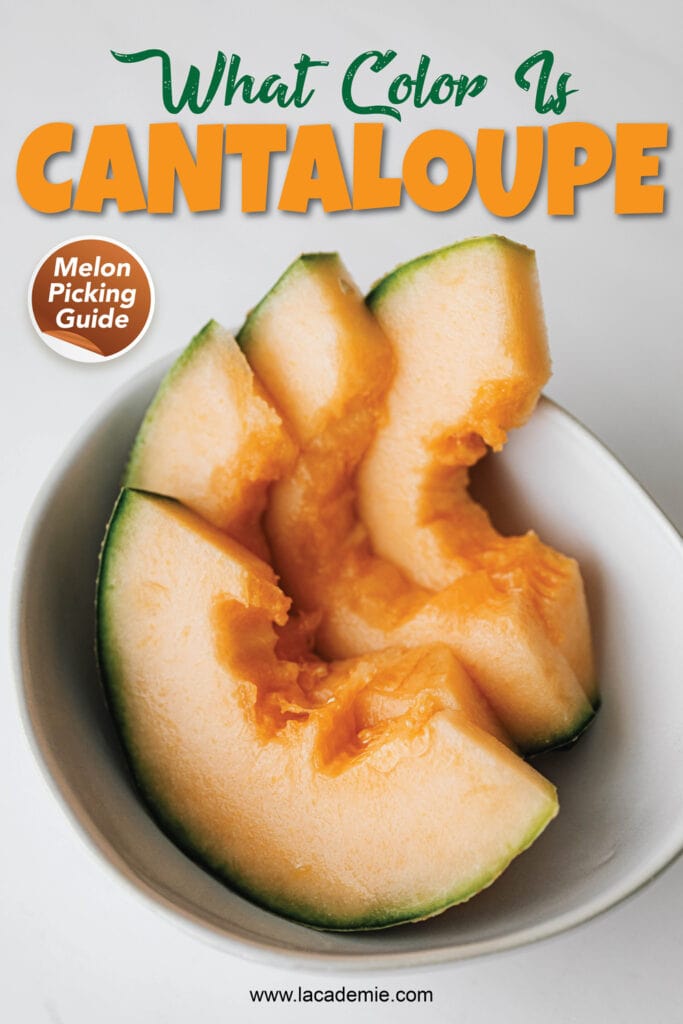
References
- Healthline. 2022. Benefits of Cantaloupe: 7 Healthy Advantages.
- Park, A., 2022. Listeria and Cantaloupe: 6 Things You Need to Know | TIME.com.

